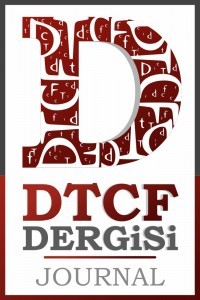Vücut Geliştirmecinin Yaşam Tarzı: Diyet ve Beden Takıntısı
Podyuma çıkan profesyonel vücut geliştirmecilerin görünürde mankenlerle pek çok benzer deneyimi paylaştığı söylenebilse de her iki grubun gerek podyumda gerek gündelik hayatlarında bedenleriyle ilişki kurma biçimleri birbirinden farklıdır ve bu farklılık cinsiyet çalışmaları çerçevesinde düşünüldüğünde performe edilen çoklu erkeklik ve kadınlıkları ortaya koyması açısından anlamlıdır. Bu bağlamda podyuma çıkan bir mankenden sadece üzerinde ‘taşıdığı’ elbiseyi sergilemesi ve bu esnada vücudunun görünmez olması iken; vücut geliştirmeciden izleyicilere ve kendisini değerlendirecek olan jüriye olabildiğince her bir kasını sergilemesi beklenir. Her iki grubun ortak bir başka deneyimi ise yeme pratiklerindeki sınırlamalardır. Toplumsal cinsiyet çalışmalarında mankenlik mesleğinin gündelik yaşam pratikleriyle nasıl bir etkileşim içerisinde olduğu sıklıkla ele alınsa da; vücut geliştirmecilerin görece marjinal beslenme pratikleri pek ilgi görmemiştir. Oysa vücut geliştirmeciler, her gün tekrarlanan egzersizlerin ve neredeyse kaçınılmaz olarak kullandıkları ilaçların yanı sıra vücutlarını hayal ettikleri biçime getirebilmek için sıradan olmayan bir takım beslenme pratiklerini de benimsemektedirler. Bu beslenme pratikleri vücut geliştirme yarışmalarına katılanlar açısından alışıldık olmayan bir takım pratiklerin de uygulanmasını zorunlu hale getirmektedir. Bu yazı Ankara’da yer alan ve vücut geliştirme yarışmalarına yarışmacı yetiştiren bir spor salonunda yapılan etnografik bir çalışmaya dayanmaktadır. Yazı boyunca vücut geliştirmecilerin bu sporun etrafında çevrelenen gündelik yaşantıları, bedensel deneyimleri ön planda tutularak özellikle de vücut geliştirmecilerin yemek pratiklerine ağırlık verilerek fenomenolojik bir bakış açısıyla ele alınacaktır.
Anahtar Kelimeler:
Toplumsal Cinsiyet, Beden Antropolojisi, Maskülenite, Vücut Geliştirme, Beslenme Pratikleri
Bodybuilder’s Life Style: The Diet and The Obsession with Body
Fashion models and professional bodybuilders seem to share the experience of walking on a runway incommon. But the nature of the relation to their bodies exposed on the catwalk are somewhat different. One of the apparent difference regarding their bodily experiences is the fact that, a fashion model is expected to expose the dress instead of her body while a bodybuilder have to display his figure making explicit each muscle. Nevertheless it is not false to claim that have something else in common in their daily lives which they have to put up with. They both have to perform strict diets. Although much more is known about the diets of the models, diets of the bodybuilders and the way those diets interact with the daily experiences of bodybuilders are rarely discussed. In this article, an ethnographical account of the diets those are practiced by the body builders will be discussed so as to explain the bodily strains of the bodybuilders. This article is based on a study that took place in a local gym in Turkey. It is the aim of the article to discuss the strict food regime of the bodybuilders from a phenomenological perspective to give a better understanding about their daily acitivities organising around this sport. Body builders are usually associated as the bodily expression of a hard core masculinity and have a bad reputiton because of the drugs. In fact the strict diets they have to undergo before the competitions have far more importance in their daily routines since the diets themselves continue for much longer periods in their lives, usually a life time. In order to look more masculine, these bodybuilders show a great effort to abstain from the worldly pleasures of food.
Keywords:
Gender, Anthropology of Body, Masculinty, Body Building, Foodways,
___
- BOLIN, Anne. “Appeal, Food and Fat: Competitive Bodybuilding, Gender and the Diet.” in Building Bodies. Ed.: Pamela S. Moore. New Brunswick, NJ: Rutgers University Press,1992. pp. 184-208.
- COUNIHAN, Carole M. & Steve L. Kaplan, ed. Food and Gender: Identity and Power. London: Routledge, 1998.
- CSORDAS, Thomas J. “Words from the Holy People: a case study in cultural phenomenology.” in Embodiment and Experience: The Existential Ground of Culture and Self. Ed.: Thomas J. Csordas. Cambridge Studies In Medical Anthropology, Cambridge: Cambridge University Press, 1994. pp.269-291.
- KLEIN, Alan M.“The Cultural Anatomy of Competetive Women’s Bodybuilding.” Many Mirrors: Body Image and Social Relations. ed. Nicole L. Sault. New Jersey: Rutgers University Press, 1994. pp.76-105.
- MESSNER, Michael A. Out of Play: Critical Essays on Gender & Sport. Albany, New York: State University of New York Press, 2007.
- PARASECOLI, Fabio. Bite Me: Food in Popular Culture. New York: Berg Publishing, 2008.
- Sault, Nicole L., ed. Many Mirrors: Body Image and Social Relations. New Jersey: Rutgers University Press, 1994.
- WILLIAMS, Simon J. & Gillian A. Bendelow. The Lived Body: Sociological Themes Embodied Issues. New York: Routledge, 1998.
- Yayın Aralığı: Yılda 2 Sayı
- Başlangıç: 1942
- Yayıncı: Ankara Üniversitesi
Sayıdaki Diğer Makaleler
İnsan Sağlığı ve Çevre Etkileşimi
Modern Arap Edebiyatında Kadın Yazarların Doğuşu
Habibü’s-Sîyer’e Göre Türkiye Selçukluları
Üniversite Öğrencileri İçin Sıra Tasarımı
Galip AKIN, Timur GÜLTEKİN, Yaner BEKTAŞ, Sibel ÖNAL, Esra TUNCEL
Türkiye Cumhuriyeti’nin On Beşinci Yıldönümü Anısına Yapılan Yayın Faaliyetleri
John Osborne'un Öfke Adlı Oyununda Metinlerarası Alaycılık
Gerçeklik ve Kurmaca -Mishima Yukio’nun “Vatanseverlik” Adlı Öyküsünde Japon Toplum Ögeleri
Üçağızlı Mağarası Üst Paleolitik Dönem Ahmarian Taş Alet Kültürü
İngiliz Dilinde ‘Aydınlanma’: Eski İngilizce’den Günümüze Değişimi ve Gelişimi
Günlük Bellek Ölçeklerinin Geliştirilmesi: Bir Faktör Analizi Çalışması
